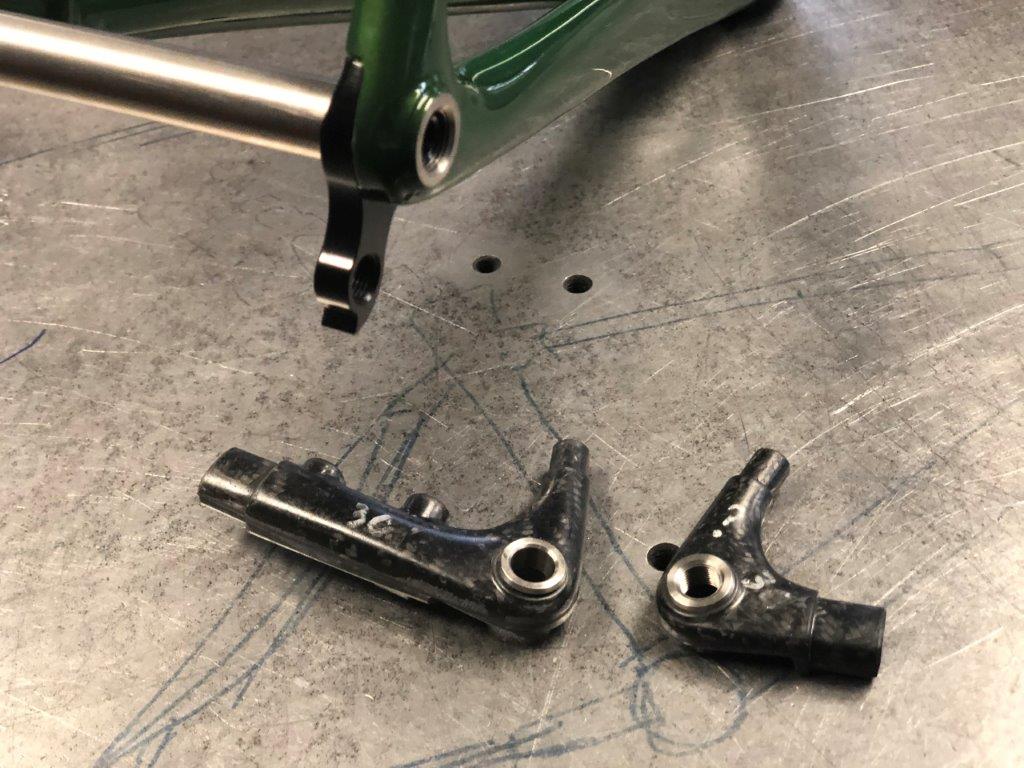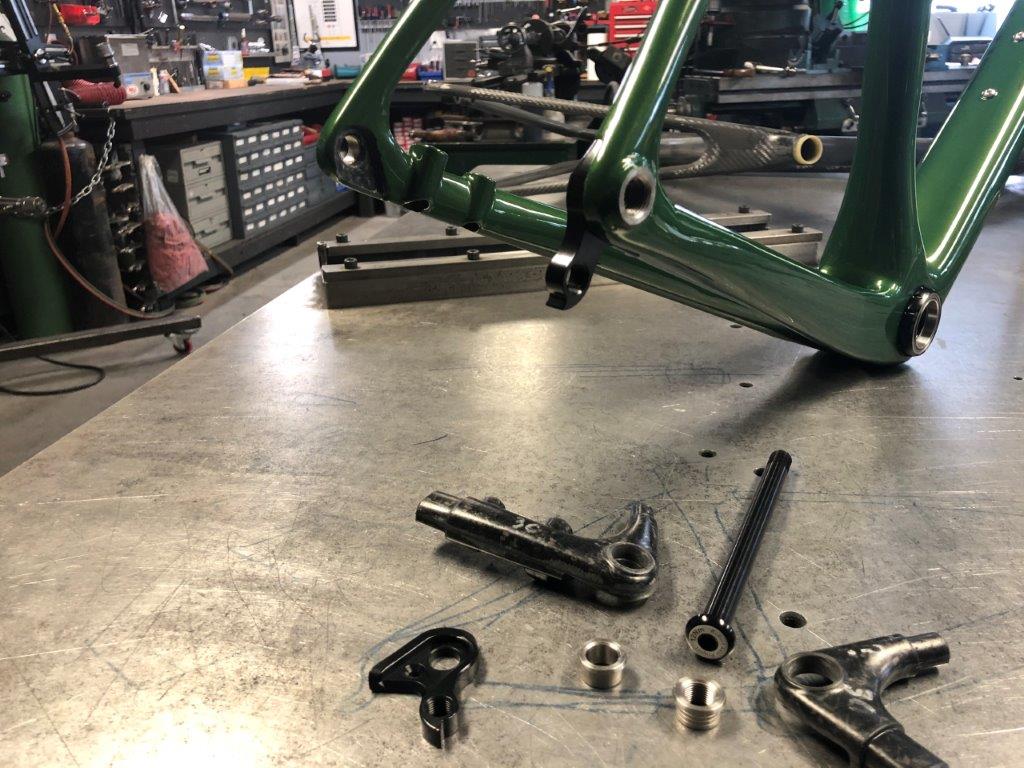They say “there is more than one way to skin a cat”. Maybe not the prettiest example, but the point is that for any element of a bike, different designers will see all sorts of ways to accomplish their goal. That said, quite frequently you see most designers doing certain things the same way. And that’s even in the cases where there are obvious improvements to be made. A couple of examples are bottom bracket shells and axle guides. We all know that press-fit bottom brackets suck, but designers still use them. There is also a lot of room for improvement in the dropouts.
A couple of the areas we wanted to address were damage to the paint when removing and replacing your wheel and separating the function of torquing the wheel from the derailleur hanger. The paint issue is pretty obvious, the hanger not so much. The main reason for separating the hanger from the threads was to allow us to sandwich the hanger between the dropout and the wheel, providing a stiffer assembly for better shifting. In these days of electronic shifting, it is important that the frame doesn’t flex against the shifting action. We also use a band clamp on the front derailleur rather than the typical wimpy hanger for the same reason.


This is just another example of how things can be done right if you aren’t building at scale and can afford to spend a few extra bucks to make sure everything is done as well as it can be. Next up we’ll talk about our compression-molded dropouts with machined brake mounts vs. other easier and less expensive types you are most likely to see on today’s carbon frames.